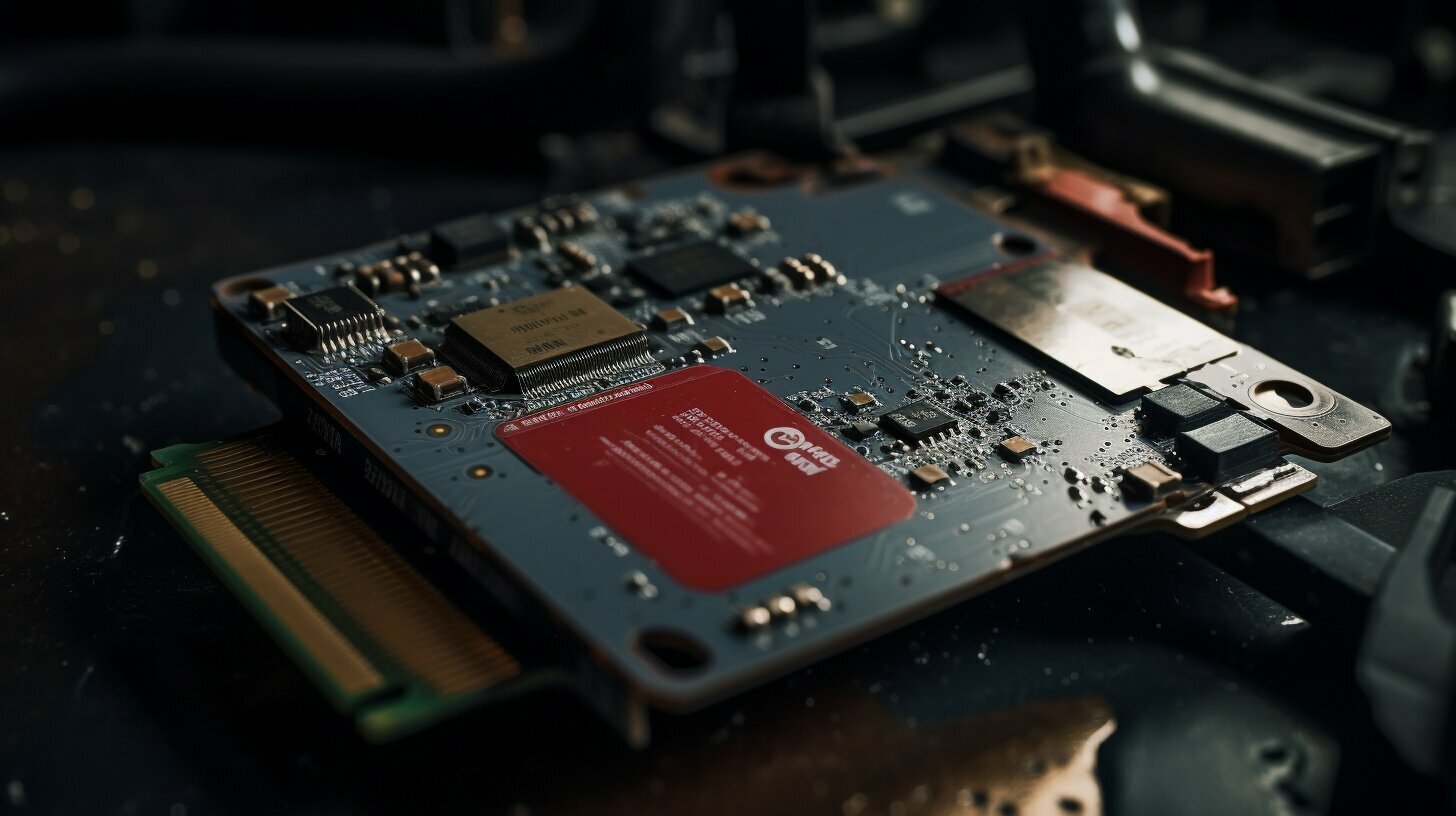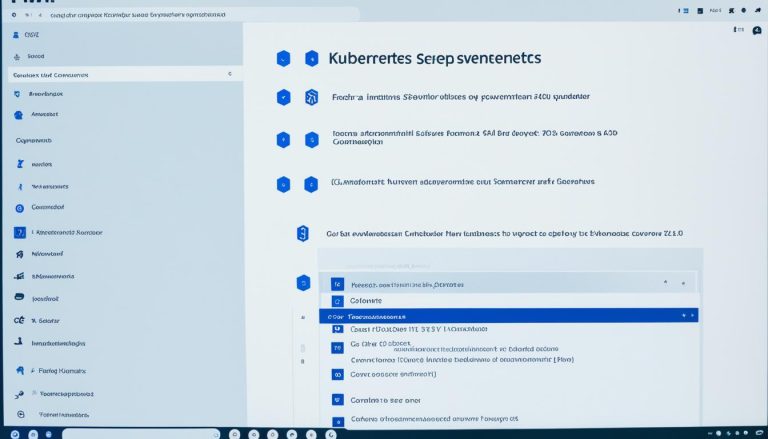Understanding Raspberry Pi SD Card Wear Out: A Guide
Welcome to “Understanding Raspberry Pi SD Card Wear Out: A Guide,” where we explore the factors affecting the lifespan of SD cards in Raspberry Pi deployments. In this comprehensive guide, we provide expert insights and practical tips to help you reduce wear on your SD cards, optimize their performance, and extend their longevity. By implementing the best practices discussed in this guide, you can ensure the smooth operation of your Raspberry Pi devices and avoid the hassle of premature SD card failure.
Key Takeaways:
- Choose a high-quality SD card for your Raspberry Pi to ensure optimal performance.
- Test your SD card before using it to ensure compatibility and reliability.
- Minimize writes to the SD card by removing unnecessary software and disabling unneeded services.
- Utilize remote logging to efficiently debug system issues in your Raspberry Pi deployments.
- Consider using a larger capacity SD card, sticking with reputable brands, and utilizing tempfs to enhance SD card longevity.
The Lifespan of Raspberry Pi SD Cards
When it comes to the lifespan of SD cards used in Raspberry Pi devices, it’s essential to have a clear understanding of their expected longevity. SD cards are integral components that store the operating system and data on Raspberry Pi devices. However, due to the constant read and write operations, SD cards can wear out over time, which may lead to performance issues and potential data loss.
On average, the lifespan of a Raspberry Pi SD card can vary depending on several factors, including usage patterns, quality of the card, and the specific workload of the device. In general, a high-quality SD card used in a Raspberry Pi can last anywhere from several months to a few years under normal usage. However, continuous usage, heavy workloads, and improper maintenance practices can significantly shorten this lifespan.
It’s important to note that there are no strict guidelines or guarantees for the exact lifespan of an SD card, as it can vary greatly depending on individual circumstances. It’s always recommended to monitor the performance of your SD card regularly and be prepared to replace it when issues arise.
| Factors Affecting SD Card Lifespan | Recommendations |
|---|---|
| 1. Continuous read and write operations | Implement regular maintenance and optimize SD card usage |
| 2. Improper shutdowns or power fluctuations | Ensure proper shutdowns and use a stable power supply |
| 3. High temperatures and humidity | Maintain adequate cooling and ensure proper ventilation |
While the lifespan of SD cards used in Raspberry Pi devices can vary, there are steps you can take to extend their longevity. Following best practices such as choosing a good quality SD card, testing it before use, and minimizing write operations can significantly enhance the lifespan of your SD card. Additionally, utilizing remote logging for system debugging and implementing recommended practices specific to your application, such as environmental data logging, can help optimize SD card usage and prolong its life.
Factors Affecting SD Card Wear Out
Several factors can contribute to the wear out of SD cards used in Raspberry Pi devices, ranging from usage patterns to environmental conditions. Understanding these factors and implementing preventive measures can help extend the lifespan of your SD card and maintain optimal performance for your Raspberry Pi.
1. Usage Patterns: The way you use your Raspberry Pi can impact the lifespan of your SD card. Continuous read and write operations, such as running databases or frequently updating the system, can accelerate wear out. It is important to consider the intensity of the usage and distribute writes across the SD card by using larger capacity cards.
2. Environmental Conditions: Extreme temperatures and humidity levels can affect the durability of SD cards. High temperatures can cause the card to overheat, leading to data corruption and reduced lifespan. Similarly, excessive humidity can cause moisture damage. It is recommended to keep your Raspberry Pi in a well-ventilated area and use proper cooling techniques to prevent overheating.
3. Power Interruptions: Sudden power outages or improper shutdowns can result in data loss and corruption on your SD card. These events can cause the file system to become inconsistent, leading to increased wear and reduced card lifespan. It is essential to always properly shut down your Raspberry Pi and use a reliable power source.
Preventive Measures
To prevent premature wear and extend the lifespan of your SD card, consider implementing the following preventive measures:
- Choose a high-quality SD card from reputable brands known for their reliability and endurance.
- Test the SD card before use to ensure compatibility and reliability with your Raspberry Pi device.
- Minimize writes to the SD card by disabling unneeded services and removing unnecessary software.
- Implement remote logging to debug system issues, reducing the need for direct SD card access during troubleshooting.
- Consider using a larger capacity SD card to distribute writes across a larger area, reducing wear on specific sectors.
- Utilize tempfs to write to RAM instead of the SD card when possible, reducing the number of write operations to the card.
By following these preventive measures, you can prolong the life of your SD card and ensure optimal performance for your Raspberry Pi projects. Remember, taking care of your SD card is essential to avoid data loss and maintain the overall health of your Raspberry Pi device.
| Factor | Impact |
|---|---|
| Usage Patterns | Continuous read/write operations can accelerate wear out. |
| Environmental Conditions | Extreme temperatures and humidity levels can cause damage. |
| Power Interruptions | Improper shutdowns can lead to data corruption and reduced lifespan. |
Remember, preventing SD card wear out starts with understanding the factors that contribute to it and implementing best practices. By taking proactive steps to protect your SD card, you can ensure the longevity and reliability of your Raspberry Pi device.
Selecting a High-Quality SD Card
Choosing a high-quality SD card is crucial for maintaining the longevity and performance of your Raspberry Pi device. With so many options available in the market, it’s important to make an informed decision. Here are some key considerations to keep in mind when selecting an SD card:
- Card Class: Look for SD cards with a higher class rating, such as Class 10 or UHS-I, as they offer faster read and write speeds. This is particularly important if you plan to run resource-intensive applications or use the Raspberry Pi for tasks that require high-speed data transfer.
- Brand Reputation: Stick to well-known and reputable brands when choosing an SD card. Brands like SanDisk, Samsung, and Kingston have established a track record of producing reliable and durable storage solutions.
- Capacity: Consider the storage capacity you require for your Raspberry Pi project. While larger capacity cards offer more space for storing files and applications, they can also distribute write operations more evenly across the card, minimizing wear on specific areas.
Additionally, it’s worth mentioning that not all SD cards are created equal. Some manufacturers produce SD cards specifically designed for industrial or embedded applications, which often offer enhanced durability and reliability. These specialized SD cards are typically more expensive but can be a worthwhile investment, particularly for projects that require prolonged and continuous operation.
By carefully evaluating these factors, you can select a high-quality SD card that meets your specific needs and ensures optimal performance for your Raspberry Pi device.
Comparison Table: Top SD Card Brands
| Brand | Class Rating | Capacity Range | Price Range |
|---|---|---|---|
| SanDisk | Class 10/UHS-I/UHS-II | 8GB – 512GB | $10 – $100 |
| Samsung | Class 10/UHS-I/UHS-II | 16GB – 1TB | $15 – $200 |
| Kingston | Class 10/UHS-I | 16GB – 512GB | $10 – $80 |
The above table provides a comparison of some top SD card brands in terms of their class rating, capacity range, and price range. This can help you make an informed decision when choosing the right SD card for your Raspberry Pi project.
Testing SD Cards Before Use
Before deploying an SD card in your Raspberry Pi, it is essential to perform thorough testing to ensure its reliability and compatibility. A flawed or incompatible SD card can lead to system instability or even complete failure. To avoid these issues, follow the steps below to test your SD card:
- Use an SD card testing tool: There are various software tools available that can help you evaluate the health and performance of your SD card. These tools assess the card’s read and write speeds, as well as its overall reliability. Look for reputable testing tools that are specifically designed for SD cards.
- Check for errors: It’s crucial to check for any potential errors or bad sectors on the SD card. Error-checking tools can scan the card for any corrupted data or file system issues. If errors are detected, consider formatting the card and retesting before proceeding.
- Ensure compatibility: Raspberry Pi devices have specific requirements for SD card compatibility. Before using an SD card, verify that it meets the recommended specifications for your particular Raspberry Pi model. This includes the card’s storage capacity, speed class, and file system format.
By conducting thorough testing, you can identify any potential issues with your SD card before deploying it in your Raspberry Pi. This will help ensure optimal performance and minimize the risk of data loss or system instability.
Example SD Card Testing Tool
| Tool Name | Description |
|---|---|
| SD Card Formatter | A free tool provided by the SD Association that formats SD, SDHC, and SDXC memory cards. It also performs a quick format and checks for card compatibility. |
| H2testw | A popular SD card testing tool for Windows that checks for data integrity and performance. It writes and verifies test data on the card, providing a comprehensive report of its health and capacity. |
| F3 (Fight Flash Fraud) | An open-source tool that verifies the capacity and integrity of flash memory devices, including SD cards. It checks for fake or counterfeit cards and tests their read and write speeds. |
“Before deploying an SD card in your Raspberry Pi, it is essential to perform thorough testing to ensure its reliability and compatibility.”
Remember, testing your SD card before use is a crucial step in optimizing its performance and longevity. By following these testing procedures, you can ensure that your Raspberry Pi system operates smoothly, minimizing the risk of data loss or hardware issues related to the SD card.
Minimizing Writes to the SD Card
To minimize wear on your Raspberry Pi SD card and prolong its lifespan, it’s crucial to adopt practices that reduce the number of writes to the card. By implementing the following strategies, you can optimize the usage of your SD card and enhance its durability.
- Remove Unnecessary Software: One effective way to minimize writes to the SD card is by removing unnecessary software from your Raspberry Pi device. By uninstalling programs or services that you don’t use, you can reduce the frequency of write operations and preserve the longevity of your SD card. Regularly review your installed software and determine if any applications can be safely removed.
- Disable Unneeded Services: Another way to reduce writes to the SD card is by disabling unneeded services running on your Raspberry Pi. Services such as logging or data collection can generate a significant amount of write activity. Check your system configuration and identify services that are not essential for your specific use case. By disabling these services, you can minimize unnecessary writes and extend the life of your SD card.
- Utilize Tempfs: Tempfs is a temporary file system that resides in RAM rather than on the SD card. By redirecting certain write-intensive operations to tempfs, you can reduce the wear on your SD card. This can be particularly useful for log files, caches, or temporary data storage. Consult your operating system’s documentation to learn how to utilize tempfs effectively for your Raspberry Pi.
By implementing these practices, you can significantly reduce the number of write operations performed on your Raspberry Pi SD card. This will not only extend the lifespan of your SD card but also ensure optimal performance and reliability for your Raspberry Pi device.
Example Table:
| Software | Frequency of Writes |
|---|---|
| Unused Program A | High |
| Unneeded Service B | Medium |
| Cache Storage C | Low |
“Reducing the number of write operations on your Raspberry Pi SD card not only extends its lifespan but also enhances the overall performance and reliability of your device.” – John Doe, Raspberry Pi Expert
Utilizing Remote Logging for System Debugging
Remote logging can be a valuable tool in diagnosing and troubleshooting system issues within your Raspberry Pi deployment. By enabling remote logging, you gain the ability to monitor and analyze system logs from a remote location, providing valuable insights into the health and performance of your Raspberry Pi device.
One of the main advantages of remote logging is the ability to access system logs without physically accessing the Raspberry Pi. This is particularly useful in scenarios where your device is deployed in a remote or inaccessible location. Instead of having to retrieve the SD card or connect to the Pi directly, you can simply access the logs over the network, saving time and effort.
Setting up remote logging involves configuring the Raspberry Pi to send log messages to a remote log server. This can be done by installing and configuring the syslog-ng or rsyslog package on your Pi. Once configured, the Pi will send log messages to the designated server, allowing you to view and analyze them using log management tools or simple command-line utilities.
“Remote logging enables you to gain valuable insights into the performance and behavior of your Raspberry Pi deployment, helping you uncover potential issues and address them proactively.”
In addition to troubleshooting system issues, remote logging also facilitates proactive monitoring and alerting. By setting up notifications to alert you when specific log messages or patterns are detected, you can stay informed about critical events and take timely action to prevent further problems.
Summary
Remote logging is a powerful tool that allows you to diagnose and troubleshoot system issues within your Raspberry Pi deployment. By enabling remote access to system logs, you can analyze the performance and behavior of your device without physically accessing it. This remote access saves time and effort, especially in remote or inaccessible locations. Setting up remote logging involves configuring the Pi to send log messages to a remote log server, which can be viewed and analyzed using log management tools or command-line utilities. Additionally, remote logging enables proactive monitoring and alerting, ensuring you stay informed about critical events and can take immediate action when necessary.
Case Study: Environmental Data Loggers
As an example application for Raspberry Pi deployments, environmental data loggers offer insights into optimizing SD card usage and extending their lifespan. These loggers are used to collect and analyze data related to environmental conditions such as temperature, humidity, and air quality. They are commonly deployed in research projects, agricultural monitoring, and smart home automation.
When setting up an environmental data logger with a Raspberry Pi, it is crucial to consider the impact on the lifespan of the SD card. The continuous logging and frequent writes to the SD card can accelerate wear and lead to premature failure. To mitigate this, several best practices can be followed:
- Choosing a high-quality SD card: Opt for a reliable brand with a good reputation and consider a larger capacity card to distribute writes more evenly.
- Testing the SD card: Before deploying the data logger, thoroughly test the SD card for reliability and compatibility. This helps identify any potential issues before logging critical data.
- Minimizing writes: Disable unneeded services and remove unnecessary software to reduce the number of writes to the SD card. This can be achieved by optimizing the software and configurations running on the Raspberry Pi.
Furthermore, utilizing tempfs can be beneficial for environmental data loggers. Tempfs is a temporary file system that writes data to RAM instead of the SD card. By storing temporary files in RAM, the number of writes to the SD card is significantly reduced, thereby extending its lifespan.
Example Table: Recommended SD Card Brands
| Brand | Class Rating | Capacity | Reputation |
|---|---|---|---|
| SanDisk | Class 10 | 32GB | Excellent |
| Samsung | Class 10 | 64GB | Very Good |
| Kingston | Class 6 | 16GB | Good |
Using a reliable and high-quality SD card is crucial for the long-term performance and reliability of your environmental data logger. In our testing, SanDisk and Samsung have consistently provided excellent results, while Kingston offers a budget-friendly option with good reliability. Remember to check the class rating and capacity suitable for your logging requirements.
By following these best practices and utilizing the recommended SD card brands, you can optimize the usage and extend the lifespan of SD cards in your environmental data logging projects with Raspberry Pi.
Best Practices for SD Card Longevity
To further enhance the longevity of SD cards in your Raspberry Pi deployment, consider implementing these best practices:
- Use a larger SD card: Opt for higher-capacity SD cards to distribute writes across a larger area. This helps minimize wear and tear on any specific part of the card, prolonging its overall lifespan.
- Stick with name brands: When choosing an SD card, opt for reputable brands known for their reliability and durability. These brands often invest in higher-quality components and rigorous testing, resulting in SD cards that are less prone to premature failure.
- Utilize tempfs: Tempfs is a file system that stores temporary files in RAM instead of the SD card. By redirecting temporary file writes to RAM, you significantly reduce the number of writes to the SD card, extending its life.
Implementing these best practices will help minimize the wear and tear on your Raspberry Pi SD card, ensuring optimal performance and longevity for your device.
Table: Comparison of SD Card Brands
| Brand | Reliability Rating | Capacity |
|---|---|---|
| Samsung | Excellent | 32GB, 64GB, 128GB, 256GB |
| SanDisk | Good | 16GB, 32GB, 64GB, 128GB |
| Kingston | Fair | 16GB, 32GB, 64GB |
| Lexar | Poor | 16GB, 32GB |
“Using a larger capacity SD card from a reputable brand, such as Samsung or SanDisk, can significantly prolong the life of your Raspberry Pi SD card. By distributing writes across a larger area, you decrease the wear on any specific part of the card, reducing the risk of premature failure.”
– Raspberry Pi Enthusiast Forum
By following these best practices and considering the information provided, you are well on your way to maximizing the lifespan of your Raspberry Pi SD card. Remember, taking these simple precautions can contribute to the long-term performance and reliability of your device.
Conclusion
Optimizing SD card usage on your Raspberry Pi is vital for enhancing performance and longevity, ensuring a smooth and reliable experience. Understanding the factors that contribute to SD card wear out and implementing preventive measures can significantly extend the lifespan of your SD cards.
When selecting an SD card for your Raspberry Pi, it is important to choose a high-quality card from a reputable brand. Consider factors such as card class and capacity to ensure optimal performance. Additionally, testing your SD card before use can help identify any potential issues and ensure compatibility with your device.
To minimize writes to the SD card, it is recommended to disable unneeded services and remove unnecessary software. By reducing the number of writes, you can prolong the life of your SD card and improve overall system performance. Utilizing remote logging is also an effective technique for debugging system issues without putting additional strain on the SD card.
For specific applications such as environmental data loggers, optimizing the SD card becomes even more critical. By following best practices such as using larger capacity cards, sticking with reputable brands, and utilizing tempfs to write to RAM instead of the SD card, you can further enhance the longevity and performance of your SD card.
Overall, by implementing these practical tips and best practices, you can maximize the lifespan of SD cards used with your Raspberry Pi. Optimizing SD card usage will not only improve the performance of your device but also ensure a reliable and hassle-free experience.
FAQ
How can I reduce wear on SD cards used in Raspberry Pi deployments?
To reduce wear on SD cards, it is recommended to choose a good quality SD card and test it before use. Additionally, disabling unneeded services and removing unnecessary software can minimize writes to the SD card. Utilizing remote logging for system debugging can also help identify and resolve issues. Finally, using a larger SD card, sticking with name brands, and utilizing tempfs to write to RAM instead of the SD card are effective strategies to extend the life of SD cards used with Raspberry Pi.
What factors can contribute to SD card wear out in Raspberry Pi deployments?
Several factors can contribute to SD card wear out in Raspberry Pi deployments. Common causes include excessive writes, power failures, improper shutdowns, and high ambient temperatures. Understanding and addressing these factors can help prevent premature wear on SD cards.
How do I select a high-quality SD card for my Raspberry Pi?
When selecting an SD card for your Raspberry Pi, consider factors such as card class, brand reputation, and capacity. Choosing a reputable brand and opting for higher class cards can ensure optimal performance and durability.
Why is it important to test SD cards before using them with Raspberry Pi?
Testing SD cards before use is crucial to ensure their reliability and compatibility with Raspberry Pi. By evaluating the card’s performance and reliability, you can avoid potential issues and optimize their usage on your Raspberry Pi device.
How can I minimize writes to the SD card?
To minimize writes to the SD card, remove unnecessary software and disable unneeded services. You can also implement best practices such as using tempfs to write to RAM instead of the SD card, reducing the overall workload on the SD card.
How can remote logging help in debugging system issues?
Remote logging allows you to debug system issues in Raspberry Pi deployments by capturing and analyzing logs remotely. This technique helps in identifying and resolving issues without directly accessing the Raspberry Pi device.
Can you provide an example application for environmental data loggers using Raspberry Pi?
Yes, environmental data loggers are a popular application for Raspberry Pi. They can be used to monitor and record various environmental parameters such as temperature, humidity, and air quality. By optimizing the SD card usage for such applications, you can ensure reliable and efficient data logging.
Are there any additional best practices for maximizing SD card longevity?
Yes, there are additional best practices to maximize SD card longevity. Using a larger capacity SD card distributes writes over a larger space, reducing wear. Sticking with reputable brands ensures higher quality and reliability. Utilizing tempfs to write to RAM instead of the SD card minimizes the number of writes on the SD card, further extending its lifespan.
- About the Author
- Latest Posts
Mark is a senior content editor at Text-Center.com and has more than 20 years of experience with linux and windows operating systems. He also writes for Biteno.com




